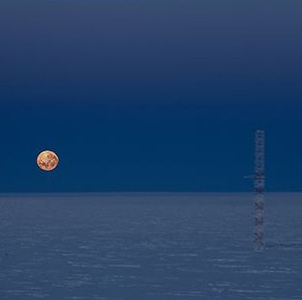|
Atmospheric Observations at the South Pole 
National Science Foundation Posted January 16, 2018 Image: Kyle Obrock, NSF The full moon rises above the horizon at NSF’s Amundsen-Scott South Pole Station in this 2016 photo. To the right of the photo is the Atmospheric Research Observatory (ARO) which, since 1997, has been used to support scientific research related to atmospheric phenomena. The two-story ARO building houses a long-term research program carried out by the NOAA Earth System Research Laboratory Global Monitoring Division. NOAA/ESRL operates a climate Baseline Observatory at ARO to measure long-term trends of important trace gases, aerosols, and solar radiation and to investigate the influence of these gases and aerosols on the Earth's climate. One of the longest and most complete records of carbon-dioxide levels in the atmosphere, for instance, comes from the South Pole, dating back to 1955.
|



For USAP Participants |
For The Public |
For Researchers and EducatorsContact UsU.S. National Science FoundationOffice of Polar Programs Geosciences Directorate 2415 Eisenhower Avenue, Suite W7100 Alexandria, VA 22314 Sign up for the NSF Office of Polar Programs newsletter and events. Feedback Form |

